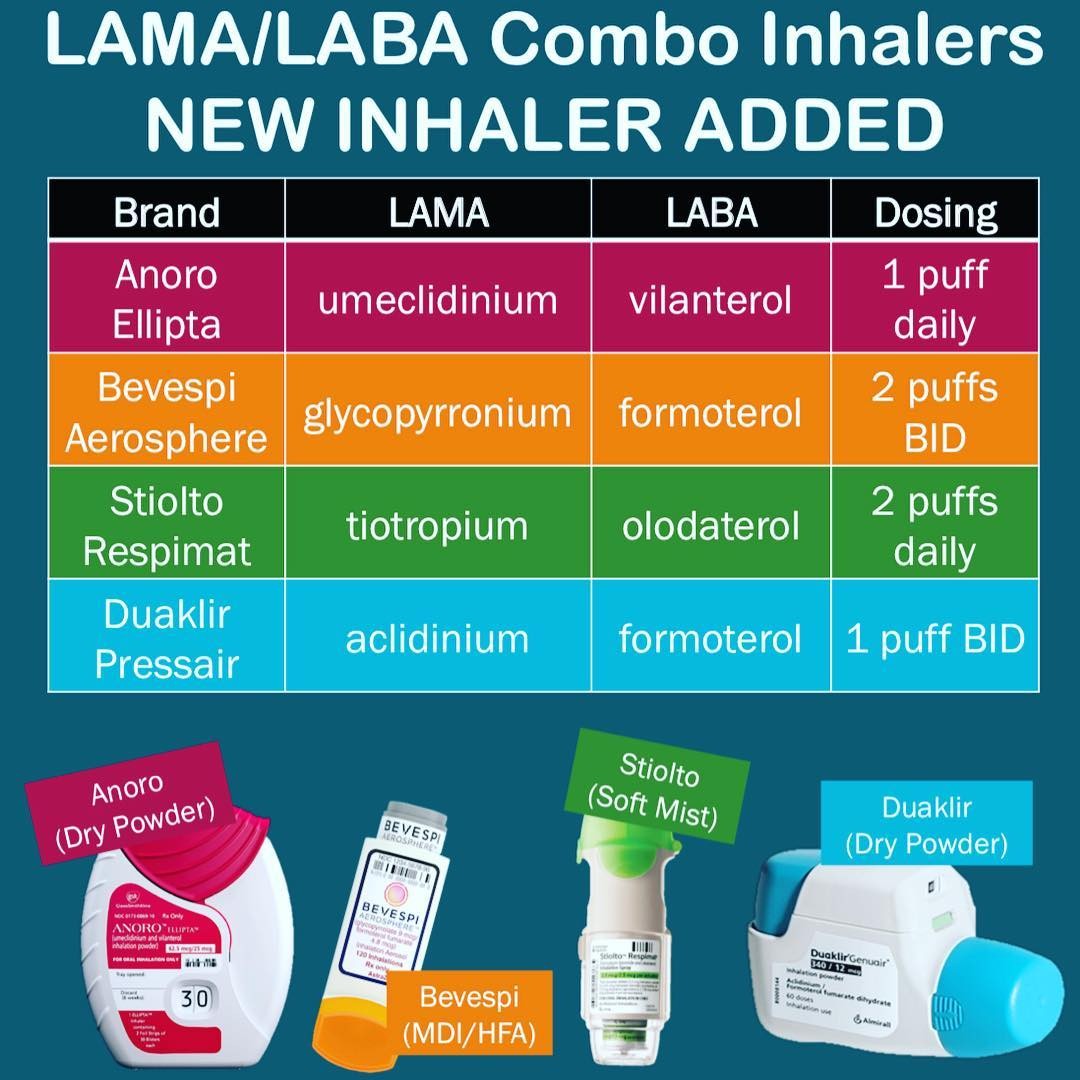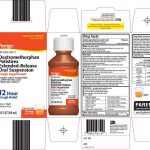
Contents
- 1 Bronchodilators (Drug Class)
- 1.0.1 What types of bronchodilators treat asthma?
- 1.0.2 List of short-acting and long-acting bronchodilators, anticholinergic bronchodilators, and xanthine derivatives
- 1.0.3 What are the side effects of bronchodilators?
- 1.0.4 Which drugs or supplements interact with bronchodilators?
- 1.0.5 Subscribe to MedicineNet’s Allergy and Asthma Newsletter
- 1.0.6 Are bronchodilators safe to use during pregnancy or while breastfeeding?
- 1.0.7 Are there differences between bronchodilators?
- 1.0.8 Do I need a prescription for bronchodilators?
Bronchodilators (Drug Class)
Bronchodilators open the airways of the lungs by relaxing bronchial muscles, helping individuals with difficulty breathing to breathe better. Bronchodilators are used to treat:
- Asthma
- Chronic obstructive pulmonary disease (COPD)
- Allergic reactions
- Related conditions that cause breathing problems
Asthma is a breathing problem caused by narrowed airways, resulting from mucus accumulation, bronchospasm (muscle spasm surrounding airways), or airway lining swelling. Asthma symptoms include:
The bronchodilators in this article manage bronchospasm associated with asthma, reactive airway disease, and exercise-induced asthma.
- Short-acting beta-adrenergic bronchodilators and ipratropium are used for acute asthma management.
- Long-acting beta-adrenergic bronchodilators, tiotropium, and theophylline are used to prevent asthma attacks or reduce symptom frequency.
What types of bronchodilators treat asthma?
Three types of bronchodilators treat asthma: 1) beta-adrenergic bronchodilators; 2) anticholinergic bronchodilators; and 3) xanthine derivatives.
- Beta-adrenergic bronchodilators relax the muscles surrounding the airways by stimulating beta-2 receptors, opening airways.
- Anticholinergic bronchodilators block acetylcholine’s effect on airways and nasal passages, relaxing muscles and dilating airways.
- Xanthine derivatives relax the smooth muscles in airway walls, open airways, and suppress airway responses to stimuli. The mechanism of action is not fully understood.
QUESTION
List of short-acting and long-acting bronchodilators, anticholinergic bronchodilators, and xanthine derivatives
Short-acting beta-adrenergic bronchodilator inhalers available in the US
- albuterol (AccuNeb, Proair HFA, Proventil HFA, Ventolin HFA)
- levalbuterol (Xopenex HFA)
- epinephrine injection
Long-acting beta-adrenergic bronchodilator asthma inhalers available in the US
- salmeterol (Servant Diskus)
- formoterol (Perforomist)
Anticholinergic bronchodilators available in the US
- ipratropium (Atrovent HFA)
- tiotropium (Spiriva Respimat)
Examples of xanthine derivatives available in the US
- theophylline (Theo 24, Elixophyllin, Uniphyl)
- aminophylline
What are the side effects of bronchodilators?
Side effects of bronchodilators vary depending on the type of bronchodilator.
Beta-adrenergic bronchodilators side effects
Common side effects include:
Other side effects include:
- Allergic reactions (rash, hives, itching)
- Nervousness
- Tremor
- Wheezing
- Increased sputum
- Shortness of breath
Possible serious side effects include:
- Bronchospasm (worsening of asthma)
- Serious allergic reactions (anaphylaxis)
- Low potassium
- Abnormal heart rhythm (palpitations)
- Fast heart rate
- Elevated blood pressure
- Chest pain
Anticholinergic bronchodilators side effects
Common side effects include:
Other side effects include:
Possible serious side effects include:
- Life-threatening bronchospasms
- Serious allergic reactions involving the closure of the airways
- Worsening symptoms of benign prostatic hyperplasia
- Worsening symptoms of narrow-angle glaucoma
Xanthines side effects
Common side effects include:
Other side effects include:
Possible serious side effects include:
Which drugs or supplements interact with bronchodilators?
Drug interactions of beta-adrenergic bronchodilators
- Combining beta-adrenergic bronchodilators with tricyclic antidepressants or monoamine oxidase inhibitors (MAOIs) can have additive effects on the vascular system, such as increased blood pressure and heart rate. The two-week period should pass between treatment with beta-adrenergic bronchodilators and tricyclic antidepressants or monoamine oxidase inhibitors.
- Combining beta-adrenergic bronchodilators with other stimulant medications is discouraged, as they can have combined effects on heart rate, blood pressure, and potentially cause chest pain in individuals with underlying coronary heart disease.
- Beta-blockers block the effect of beta-adrenergic bronchodilators and may induce bronchospasm in asthmatics.
- Combining beta-adrenergic bronchodilators with loop diuretics (e.g., furosemide) may increase the likelihood of low potassium (hypokalemia).
Drug interactions of anticholinergic bronchodilators
- Using anticholinergic bronchodilators with other anticholinergic drugs (e.g., atropine) may increase the occurrence of side effects.
Drug interactions of xanthine bronchodilators
- Allopurinol, cimetidine, ciprofloxacin, clarithromycin, itraconazole, ketoconazole, erythromycin, oral contraceptives, fluvoxamine, ephedrine, and propranolol elevate theophylline blood levels and can lead to toxicity. Theophylline toxicity causes nausea, vomiting, insomnia, seizures, agitation, and life-threatening heart rhythm abnormalities.
- St. John’s Wort, rifampin, and carbamazepine decrease theophylline levels and its effects by increasing elimination.
- Theophylline may decrease carbamazepine levels and its effects by increasing elimination. Theophylline requires lower dosages in patients with liver dysfunction. Smokers may metabolize theophylline more rapidly, requiring higher dosages.
Subscribe to MedicineNet’s Allergy and Asthma Newsletter
By clicking "Submit," I agree to the MedicineNet Terms and Conditions and Privacy Policy. I also agree to receive emails from MedicineNet and understand that I may opt out of MedicineNet subscriptions at any time.
Are bronchodilators safe to use during pregnancy or while breastfeeding?
Beta-adrenergic bronchodilators
- Beta-adrenergic bronchodilators are used to treat children, but their use during pregnancy lacks adequate studies. Some reports suggest that albuterol sulfate may cause congenital defects when used during pregnancy.
- Whether beta-adrenergic bronchodilators are excreted in breast milk is unknown.
Anticholinergics
- The safety of anticholinergic bronchodilators in pregnant women or nursing mothers is inadequately evaluated.
Xanthine bronchodilators
- Xanthine bronchodilators are not sufficiently studied in pregnant women. Theophylline is excreted in breast milk and may cause mild side effects, such as infant irritability.
- Consider the risks to the fetus or breastfeeding infant versus the risk to the woman before using bronchodilators in pregnant women. Consultation with an OB/GYN doctor may be advisable.
Are there differences between bronchodilators?
Bronchodilators differ in mechanism of action, onset duration, use, side effects, and administration.
- Beta-adrenergic bronchodilators are available as aerosols for inhalation, inhalation powders, nebulization solution, syrup, and tablets.
- Anticholinergic bronchodilators are available as inhalation solutions, inhalation powders, and nebulized solutions.
- Xanthines are available as tablets, capsules, elixirs, and injection solutions.
Do I need a prescription for bronchodilators?
- Yes. Prescription bronchodilators are approved for treating asthma and respiratory conditions.
- Over-the-counter (OTC), homeopathic, or herbal products for asthma treatment are not FDA-approved nor considered effective by many doctors.


